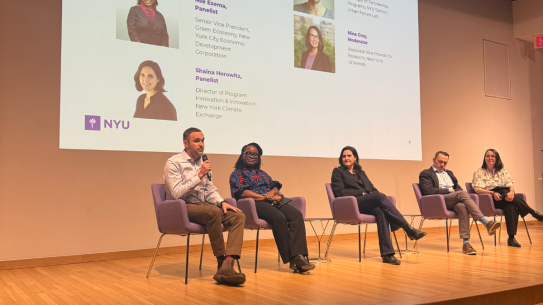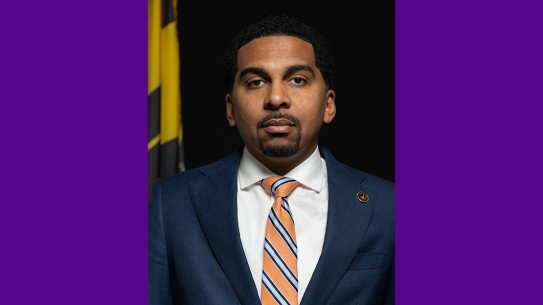The newest members of NYU Tandon faculty come at a defining moment for scientific discovery and technology

When he arrived here in 2024, Juan de Pablo, NYU’s inaugural Executive Vice President for Global Science and Technology, and the Executive Dean of NYU Tandon, emphasized that the research progress we make over the next decade will be critical to the future of a planet facing major challenges in a multitude of areas, from human health to global sustainability.
He immediately set forth an ambitious strategy to grow NYU's vast science and technology enterprise in several key areas, including responsible AI, bioengineering, quantum information sciences and materials science, urban resilience and complex systems engineering, and emerging technologies at the intersection of engineering and the arts. A cornerstone of his plan is to attract greater numbers of world-class faculty members to Brooklyn, and if our incoming group of professors is any indication, he is already succeeding impressively.
New Faculty:
Assistant Professor Aziza Almanakly
Department of Electrical and Computer Engineering
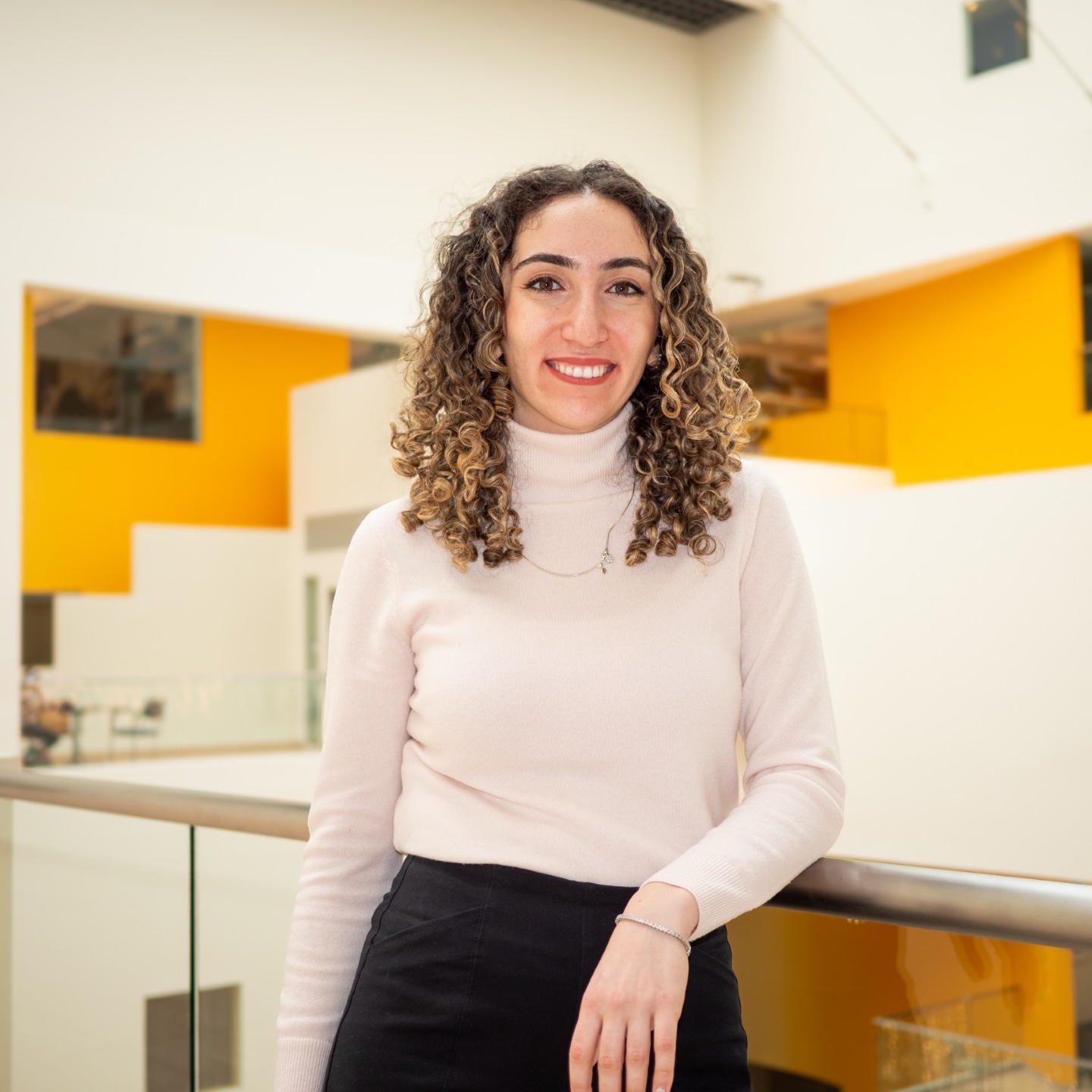
The daughter of Syrian immigrants who had come to the United States in the early 1990s, Aziza Almanakly spoke only Arabic until entering elementary school. Once acclimated, however, she proved to be a stellar student whose love of STEM was sparked by a mathematics teacher at New Jersey’s Morris Hills High School, Michael Bermel, whom she still remembers fondly.
As a sophomore at the Cooper Union, where she studied electrical engineering, Almanakly became fascinated by the idea of quantum computing after reading an article on the topic in the Wall Street Journal — even though she admits she didn’t fully understand the details of the piece. With the encouragement of Jolie Woodson, a career counselor at the school, she applied for and was accepted into a quantum-focused National Science Foundation Research Experience for Undergraduates (REU) being held at Princeton University. “That advice changed my life,” Almanakly recalls. “The REU just blew me away. I learned what it would be like to earn a Ph.D. and become a researcher. I went home after it was over and announced to my parents that I wanted to become a professor and have my own academic lab one day.” (In an unforeseen but happy coincidence, in 2022 Woodson joined the staff of NYU Tandon as Assistant Dean of Student Life & Services.)
At Princeton, Almanakly worked on devices to characterize electron transport on superfluid helium with voltage-controllable thickness, contributing to the long-term goal of using the spin of an electron on helium as a quantum bit, and other research programs followed at City University of New York, CalTech, and New York University. She soon immersed herself even further in the world of quantum computing and found yet another mentor and role model in William D. Oliver, who leads the Engineering Quantum Systems Group at MIT, where she pursued her Ph.D. in Electrical Engineering and Computer Science.
The Group aims to understand, design, manufacture, and control coherent quantum systems for information science and technology applications. She and her colleagues most recently developed a new interconnect device that can support scalable, “all-to-all” communication, meaning that all superconducting quantum processors in a network can communicate directly with each other. (Just as a classic computer has separate but interconnected components that must work together, such as a memory chip and a CPU, a quantum computer will need to communicate information between multiple processors; current architectures used to interconnect superconducting quantum processors are “point-to-point” in connectivity, meaning they require a series of transfers between network nodes, with compounding error rates, making Almanaky’s work a major step forward.)
“Quantum computers use the principles of quantum mechanics, such as superposition and entanglement, to implement computation in a fundamentally different way,” Almanakly — whose honors include an Alan McWhorter Fellowship, Clare Boothe Luce Graduate Fellowship, and Paul and Daisy Soros Fellowship for New Americans — explains. “Through the redefinition of the unit of information, from the classical digital bit (0 or 1) to the quantum bit, or qubit, quantum computers have the potential to outperform their classical counterparts in specialized algorithms and tasks. Our hope is that they will one day provide unprecedented computational power for specialized tasks like pharmaceutical and material discovery,”
Assistant Professor Juanita Hidalgo
Department of Chemical and Biomolecular Engineering
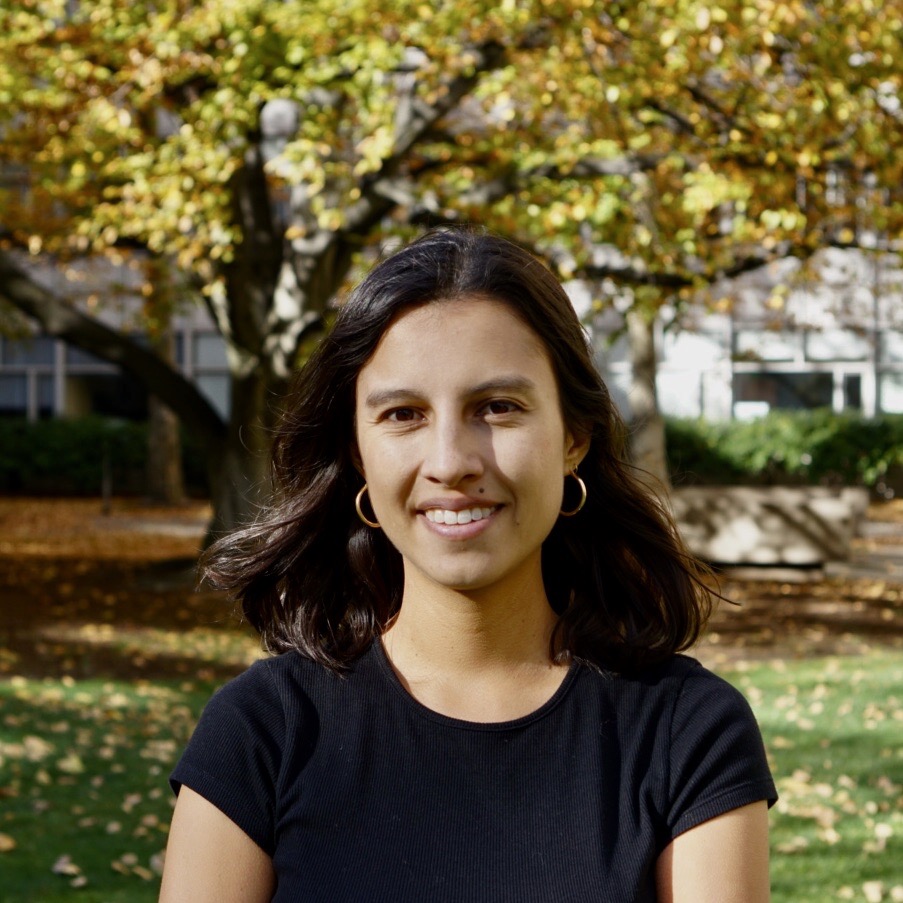
“It’s important to remember that electricity is not infinite; it’s a gift,” Juanita Hidalgo asserts.
Her native Colombia has many remote areas, known as rural non-interconnected zones, which lack access to reliable electricity. “When I looked around, it was obvious to me that this was one of the biggest challenges facing the country, and if I wanted to make a positive impact, that was where I should be focused — in energy conversion into electricity,” she recalls.
At the Universidad de Los Andes, she majored in chemical engineering, reasoning that earning her undergraduate degree in that discipline would provide her with a practical start on her goals, and her academic journey next took her to the Georgia Institute of Technology. There, she earned a master’s degree in 2021 and a Ph.D. in 2023, both in Materials Science and Engineering.
During her Ph.D., in Professor Juan-Pablo Correa-Baena’s group, Hidalgo studied hybrid halide perovskites for solar cells. She developed deep expertise in their crystal structure and chemistry using different in-situ X-ray characterization techniques. Her work at the National Synchrotron Light Source (II) led to her recognition with the Julian Baumert Ph.D. thesis award, from Brookhaven National Laboratory. The thesis resulted in valuable insights into perovskite solar cells, helping understand the challenges in speeding their commercialization.
In the Fall of 2023, Hidalgo was awarded the MIT Postdoctoral Fellowship for Engineering Excellence and joined Professor Bilge Yildiz’s group at the Massachusetts Institute of Technology (MIT). Her work continued to focus on perovskite materials — known for their crystal structure — but this time in the context of solid-state electrochemistry, such as solid oxide fuel cells and electrolysis cells. At MIT, she applied her expertise in in-situ X-ray characterization to these systems. Throughout, her motivation remained clear: bridging fundamental science with practical advances in energy conversion.
Hidalgo’s previous research focused on emerging energy materials aimed at addressing the energy and climate crisis, yet significant challenges remain in enabling their widespread adoption — particularly concerning their end-of-life. At Tandon, she will continue to bridge fundamental science with practical solutions, exploring critical questions such as: How can we extend the lifetime of energy materials? How can we design rational strategies for waste management — through recycling or repurposing? “Addressing the true sustainability and circularity of clean technologies is essential,” she says. “As we begin to experience shortages in minerals and raw materials needed for energy conversion and storage, urgent action is required.”
Assistant Professor Nana Obayashi
Department of Mechanical and Aerospace Engineering
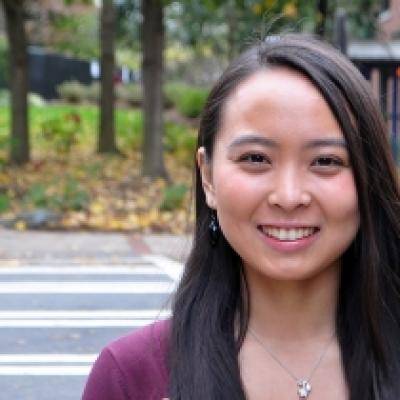
Nana Obayashi has been interested in flying for as long as she can remember. Her mother worked as a flight attendant, and her favorite toys were all airplane-related. She also loved the films made by Tokyo-based Studio Ghibli, such as Porco Rosso and The Wind Rises, which included themes of flight. The director, Hayao Miyazaki, conveyed in the latter film, “Airplanes are beautiful dreams, and engineers turn dreams into reality” — a sentiment that resonated deeply with Obayashi. “Robotics is similar,” she says. “Our field has the power to take people’s dreams and ideas and bring them into the real world.”
After completing her studies in aerospace engineering at the Georgia Institute of Technology, Obayashi worked in the automotive and aviation industries as an aerodynamics engineer, specializing in computational fluid dynamics. During this time, she earned her private pilot’s license and instrument rating. But while she enjoyed working in industry, when the global COVID-19 pandemic hit, she felt ready for a change.
In 2021 she began a doctoral program at Ecole Polytechnique Fédérale de Lausanne (EPFL), where she studied under Professor Josie Hughes at the CREATE Lab (Computational Robot Design and Fabrication Lab). There, she focused on soft robotics, a subfield that designs robotic systems using flexible, deformable materials or mechanisms, drawing inspiration from the structures and movements found in nature. “Broadly speaking, soft robots are better able to integrate seamlessly into our lives,” Obayashi explains. “They’re compliant, which means they can adapt their position flexibly; if you bump into them, it’s not going to hurt you, so that makes them good in areas like assistive technology. Their softness also means they can interact with delicate environments without causing damage, making them well-suited for tasks such as environmental monitoring.”
Obayashi’s research stems from the concept of embodied intelligence, which is the idea that intelligence emerges through the interaction between a body and its environment, and that cognition is inseparable from physical form. “Intelligence needs a body,” she says. “This becomes especially relevant in fluid-structure interactions, where the physical shape and material properties of a robot are crucial to how it senses, moves, and survives in complex, dynamic environments.” She is excited to join the Center for Robotics and Embodied Intelligence at NYU Tandon, where she will continue to explore these ideas and push the boundaries of how robots can interact with the real world.
She has not, however, left her dreams of flight behind: in 2024 she won the Amelia Earhart Fellowship, an internationally renowned award aimed at supporting women pursuing advanced studies in aerospace-related fields. She hopes to combine soft robotics and aerospace engineering in the future.
Looking ahead, she also hopes to inspire others to dream bigger — to envision a future where robots are not confined to traditional forms, but become an integral part of the real world. “We live in complex physical environments, and physical shape plays an essential role in how we interact with them," she says. "I want to help people see new possibilities: to imagine futuristic robots that belong in our world ... and to explore the exciting possibilities and challenges that come with that.”
Assistant Professor Eleonora Maria Tronci
Department of Civil and Urban Engineering/ Center for Urban Science & Progress
Before arriving in Brooklyn, Eleonora Maria Tronci read up on the iconic Brooklyn Bridge, which was opened to the public in 1883 and was originally designed to bear horse-and-buggy traffic and trolley cars. Thanks to its unique system of cables and trusses, it can bear loads of 17,000 metric tons, but how can we measure its integrity now that it is well past its 100th birthday and more than 107,000 vehicles, 32,000 pedestrians, and 4,000 bikes traverse it each day?
Tronci is supremely qualified to answer questions like that. “Structures speak to us,” Tronci says. “Through vibrations, displacements, and their own language, they tell us how they’re doing, we just need to learn how to listen.”
Her area of expertise involves assessing the condition, performance, and both the short- and long-term degradation of civil infrastructural systems, ranging from traditional structures like buildings and bridges to more complex assets such as wind turbines. She develops digital twin frameworks that merge physics-informed machine learning with data-driven modeling, integrating information from distributed sensor networks that capture structural responses including displacement, strain, vibration, and dynamic loads. Recognizing that reality is messy and does not always conform to idealized models, she works with continuously collected, real-world data to develop robust monitoring strategies that incorporate uncertainty quantification and adaptive decision-making. Her work enables damage detection, performance forecasting, and the development of maintenance strategies that are resilient to the inherent variability and complexity of operational environments.
She has always wanted to understand the why of things, Tronci says. She comes by that inquisitiveness naturally; her father is a professor of mechanical engineering, and her mother is an economist and architect who examined urban planning through a geopolitical lens. “I was used to hanging around in academic settings, attending classes, and getting caught up in interdisciplinary conversations,” she recalls.
Tronci studied at Sapienza Università di Roma in her native Italy, earning bachelor’s, master’s, and doctoral degrees in Structural Engineering before coming to the U.S. to earn a second doctoral degree from Columbia, where she bridged civil engineering with computer science and speaker recognition techniques to develop advanced methods for structural damage detection. (Her ties to New York had begun during her early academic career, when she served as a visiting scholar at Columbia during her master’s studies.)
The following years found her spanning multiple domains, from serving as a consultant for a construction project in Rome that called upon her to measure, analyze, and control the vibrations caused by building demolitions; to conducting post-doctoral research at Tufts; and, most recently, carrying out research and teaching in the Department of Civil and Environmental Engineering at Northeastern.
“The framework in which I operate includes civil and mechanical engineering, as well as computer and data science, and extends into the social sciences and policy,” she explains. At Tandon, she will continue advancing her research in structural health monitoring, expanding the focus from isolated structural analysis to system-level, globally informed approaches. Rather than concentrating on a single class of infrastructure, her work aims to develop scalable AI-driven methods that can be broadly applied across infrastructure types.
“The world is a big, complex dynamical system,” she says. “We need tools that can operate at that scale.”



